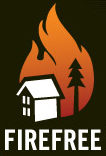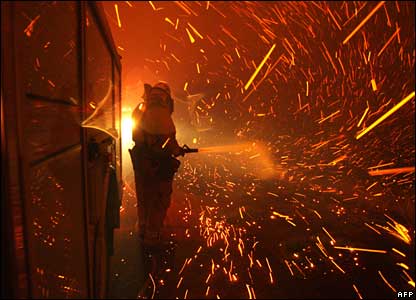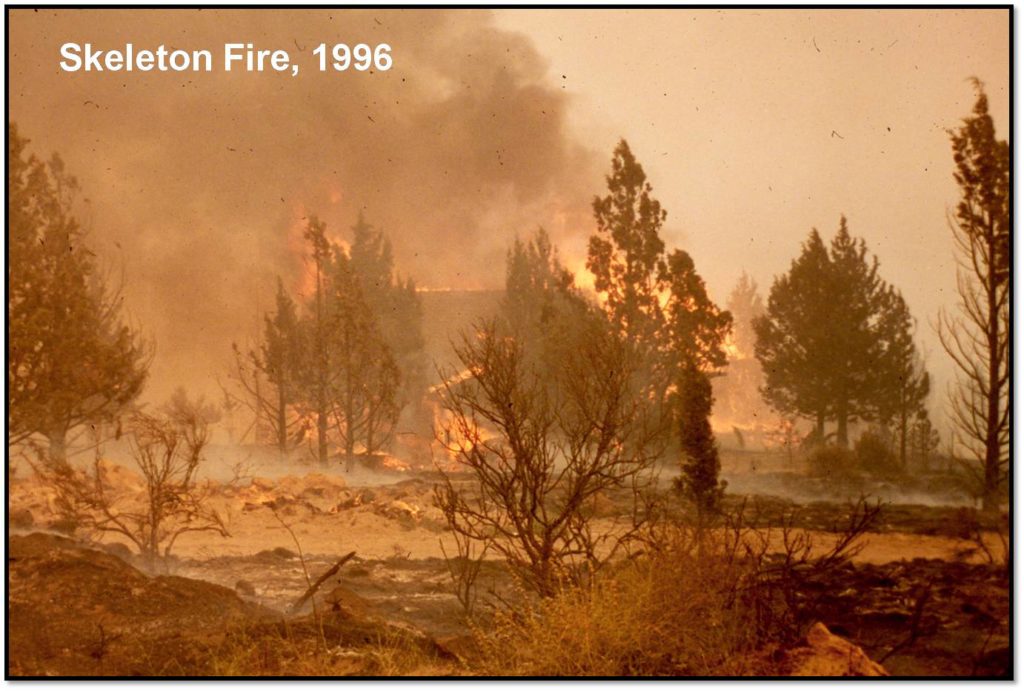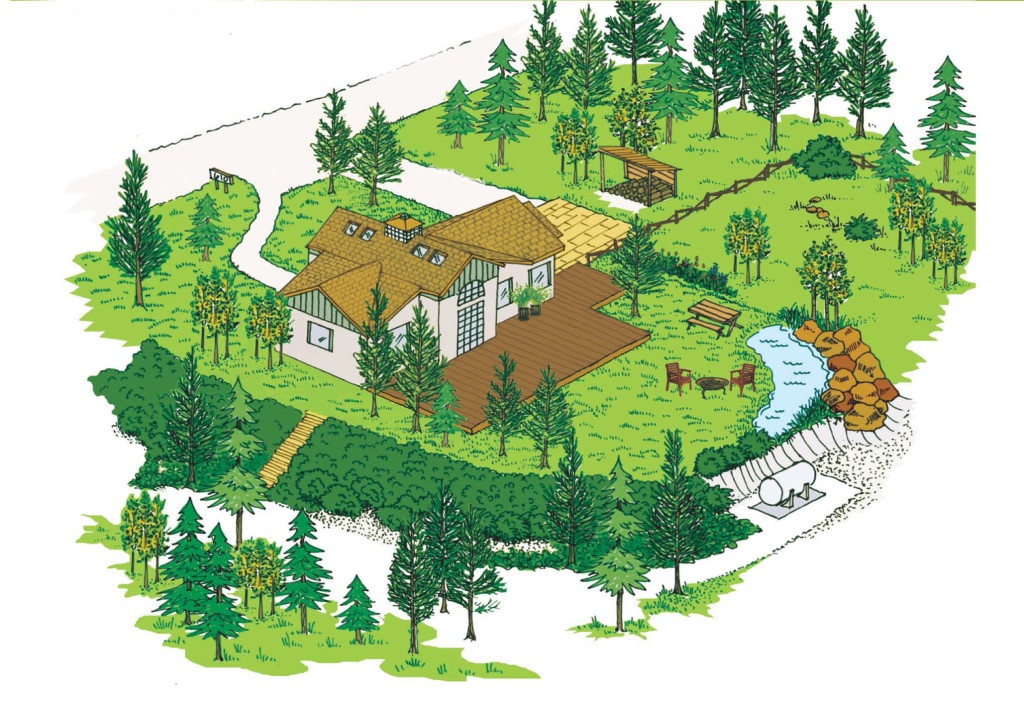10 FireFree Steps
During wildfires, most homes are lost as a result of ember showers that deposit glowing embers on vulnerable areas like roof valleys, gutters, and lawn furniture. They smolder in gathered pine needles, leaves, and even furniture cushions - eventually igniting nearby flammable structures such as fascia boards, fences, decks, and siding. Embers can travel many miles from a wildfire causing this type of secondary damage.
Gutters filled with pine needles and other debris provide the perfect nest for fire brands so keep your gutters clean to prevent possible ignition of the fascia boards which can lead fire directly under your roofing material and ignite the structure underneath. The other homes lost during wildfires are a result of ground and “ladder” fuels that lead fire directly to flammable structures and components. Defensible space is not a moonscape; you don’t have to compromise trees or landscaping for fire safety.
Ultimately, there are not enough fire trucks and personnel to protect every home. The truth is, there will never be enough trucks to protect each and every home in a wildland fire situation. During a wildland fire, fire agencies are maxed out and concentrate on halting the fire's advancement. There is no time to prepare all the individual homes against the oncoming threat. Firefighters are relying on you to do your part to protect your property from the catastrophic effects of wildfire. Take responsibility now, and prepare your home ignition zone for wildland fire.
During wildfires, most homes are lost as a result of ember showers that deposit glowing embers on vulnerable areas like roof valleys, gutters, and lawn furniture. They smolder in gathered pine needles, leaves, and even furniture cushions - eventually igniting nearby flammable structures such as fascia boards, fences, decks, and siding. Embers can travel many miles from a wildfire causing this type of secondary damage.

FireFree 10 Steps
Act Now! Follow these steps today to protect your home from being destroyed or damaged by wildfire.
1. Define Your Defensible Space
Create 30-100 feet of fire-resistant space around your home to prevent fires from starting near or spreading to your home.
2. Reduce brush near home & underneath trees
Trim or remove brush to eliminate a direct path for fire to reach your home or spread into trees by removing flammable brush species from your defensible space.
3. Prune or remove trees
Prune low hanging branches and thin out dense stands of trees to reduce the potential for fire to reach tree tops and spread to other trees.
4. Keep grass & weeds cut low
Trim grass and weeds to less than 4 inches to prevent the rapid spread of fire and high flames.
5. Clear wood piles & building materials away
Keep combustible materials at least 30 feet away from your home and outbuildings. Keep all brush and weeds at least 10 feet away from wood piles, propane, and fuel tanks.
6. Keep your yard & roof clean
Clear pine needles, leaves, and debris from your yard, deck, roof, and gutters to reduce places where embers can smolder and ignite your home. Remove overhanging and dead tree branches.

7. Keep address signs visible
Post easy-to-read address signs and trim vegetation away from driveways so emergency personnel can find and access your home quickly. If they find you, they can’t help you!
8. Choose fire resistant building materials & lawn furniture
Use fire resistant roofing, siding, decking, and fencing materials. Choose non-combustible lawn furniture to prevent the spread of fire to your home. Install and maintain spark arrestors on chimneys.
9. Recycle yard debris - avoid burning
Instead of burning, recycle or compost your yard waste. Debris burning can easily ignite a brush fire with a gust of the wind that rapidly overtakes a neighborhood.
10. Be prepared to respond to wildfire
Keep a 72-Hour kit handy. Know evacuation routes from your neighborhood and practice them with your family, using a checklist of what to do before leaving.

